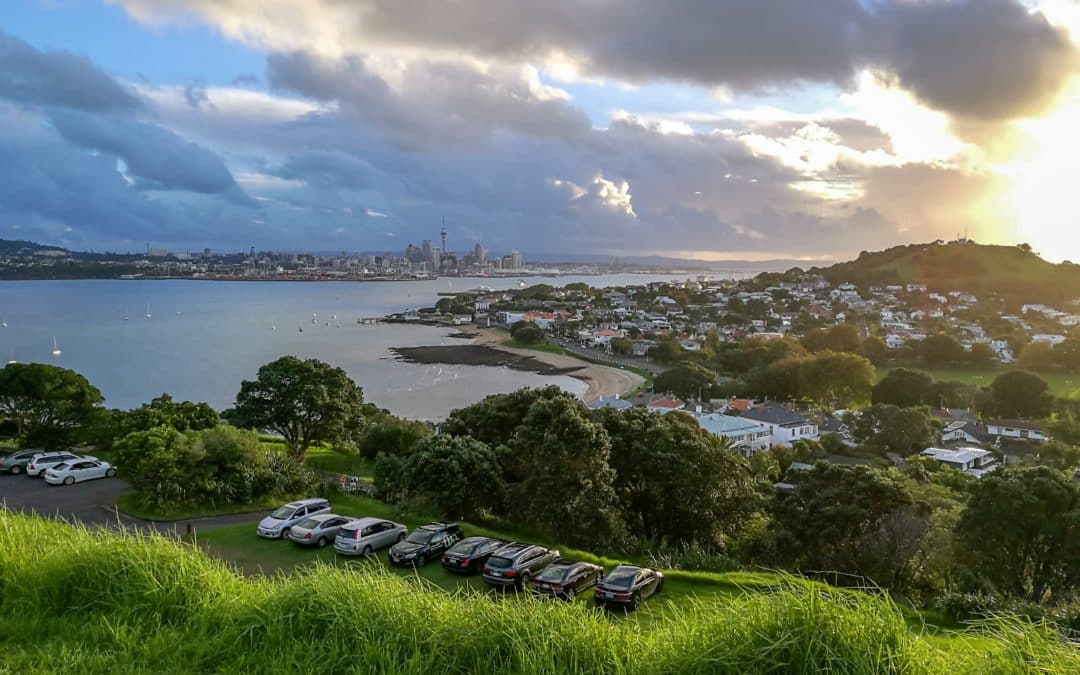Brought to you by the Valocity Research Team: Wayne Shum and James Wilson
Executive Summary
As the population in Auckland continues to grow, and the city continues to expand, the number of private vehicles in use continues to rise. There are currently approximately 1.15 million private vehicles in the city (Waka Kotahi NZTA Vehicle Fleet Data, August 2021). Unsurprisingly, the demand for parking has been growing along with the city’s expansion.
The Auckland Unitary Plan has promoted the intensification of many suburbs across the city, with on-site parking in greater demand as a result. Where traditionally car parking was provided by garaging or on-site car park, with more intensive land use, this is now not always the case. As the city’s density increases, the availability of off-street parking is becoming more important.
Despite the investment into public transport, the vast majority of travel in Auckland remains through private vehicles.
This article will examine parking availability in different areas, ages, and property types across Auckland.
Overall Number
Based on Auckland Council District Valuation Roll data, there are approximately 690,000 off-street parks in Auckland, including 434,000 internal garage spaces and 244,000 detached garage spaces. Based on these numbers – there appears to be a need for 472,000 private vehicles to be parked on the street, within commercial car parking, or in the front yard.
Suburban Comparison
Valocity research found that the suburbs with the highest car parking to home ratio are those on the fringe areas of Auckland. Properties in these suburbs are generally detached dwellings on their own sections, allowing for the construction of garages and off-street parking.
Table 1: Auckland suburbs with highest car parking to home ratio
| Suburb | Average carpark/garage spaces per Home |
| Whitford | 2.6 |
| Lucas Heights | 2.5 |
| Paremoremo | 2.5 |
| Totara Park | 2.5 |
| Kingseat | 2.4 |
| Shamrock Park | 2.4 |
| Waiau Pa | 2.4 |
| Okura | 2.4 |
| Ardmore | 2.4 |
| Coatesville | 2.3 |
| Alfriston | 2.3 |
| Bombay | 2.3 |
| Runciman | 2.3 |
| Oratia | 2.2 |
| Redvale | 2.2 |
The suburbs with the lowest car park to home ratios can be categorised into three groups.
- Established central suburbs dominated by older character homes, these do not have carparking or garaging as part of the original construction
- Suburbs where the steep contour of residential sites makes it difficult to provide on-site parking
- Inner-city suburbs, where inner-city apartment living means private vehicles are not required
Table 2: Auckland suburbs with lowest car parking to home ratio
| Suburb | Average Carpark Per Home |
| Auckland Central | 0.4 |
| Omiha | 0.5 |
| Grafton | 0.5 |
| Palm Beach | 0.6 |
| Oneroa | 0.7 |
| Onetangi | 0.7 |
| Ostend | 0.8 |
| Kingsland | 0.8 |
| Wesley | 0.8 |
| Ponsonby | 0.8 |
| Surfdale | 0.8 |
| Onehunga | 0.8 |
| Waterview | 0.8 |
| Penrose | 0.8 |
| Freemans Bay | 0.8 |
Age Comparison
The number of car parks per home steadily increased in the post-war era as the city expanded outwards. The average number of car parks per home peaked in the 1990s.
Since the early 2000s, and asAuckland’s property density has intensified, the share of apartments and townhouses have risen at the expense of detached homes. These apartments and townhouses often have little or no car parking on site. The average number of car parks per home has declined in the 2010s and start of the 2020s.

Impact of Legislation
The Auckland Unitary Plan was made Operative in Part in November 2016. The Unitary Plan allows for intensive residential developments by removing the density requirement for residentially zoned properties. This change encouraged the development of townhouses and apartments across Auckland. By fitting more households into an existing suburb, the Unitary Plan has driven up the demand for car parking within established suburbs.
The National Policy Statement on Urban Development took effect in August 2020; the policy aimed to improve housing affordability and directed councils to plan for more housing. It removed rules for minimum off-street car-parking for new developments from within the Auckland Unitary Plan.
As a result, many new developments planned since August 2020 have no or few car parks in residential developments. The ratio of car parks per home is likely to continue to decline in the future.
Cost of Carparks
Homeowners can sometimes purchase car park space in their apartment buildings and townhouse developments, but the price varies significantly. In August 2021, one carpark in a recently completed Auckland apartment complex had reportedly sold for $288,000. Other Central Auckland carparks had sold for over $100,000 in 2020 and 2021. The prices have doubled since 2016.
In the suburbs, prices range from $30,000 in Mt Wellington to $50,000 in Onehunga. Before the intensification of these suburbs, carparks were included in the price of the homes and not sold separately.
Today. Carparks are often marketed as optional extras when developments are marketed off plans. The final price depends on the number of carparks in the apartment complex, the proximity of public transport, and the availability of street parking.
Conclusion
- The demand for car parking is not likely to dampen soon. Despite investment into public transport, the majority of trips are still taken using private vehicles
- Street parking along arterial roads is gradually being removed to make way for cycle lanes or bus lanes, further reducing the number of car park spaces available
- Some Auckland CBD fringe suburbs have introduced time limits for street parking for non-residents
- As a result, in the future, homes with on-site parking may attract an increased price premium, particularly along arterial roads and inner-city suburbs
- We have seen a rise in car-park-less apartment buildings constructed in the suburbs, encouraging public transport use. These complexes are often within close proximity to public transport hubs – this trend is likely to continue
For further information or if you would like to understand more about where Aucklanders park, please contact wayne.shum@valocityglobal.com or james.wilson@valocity.co.nz.

